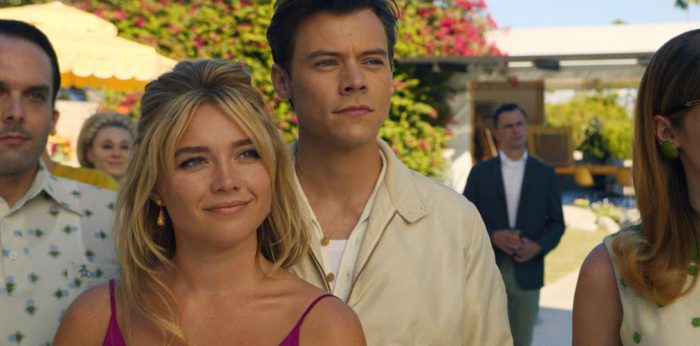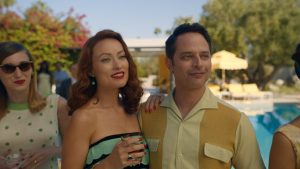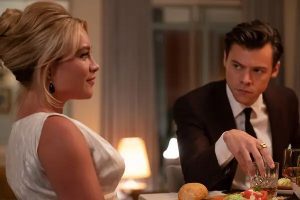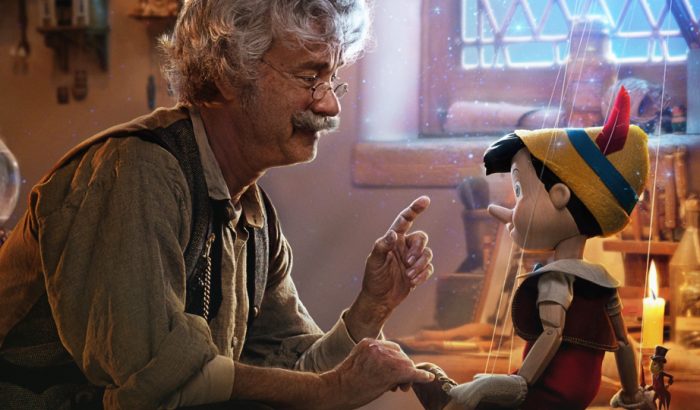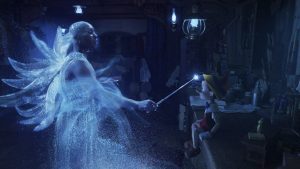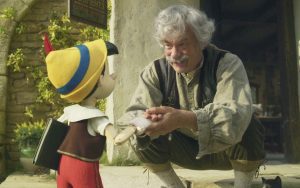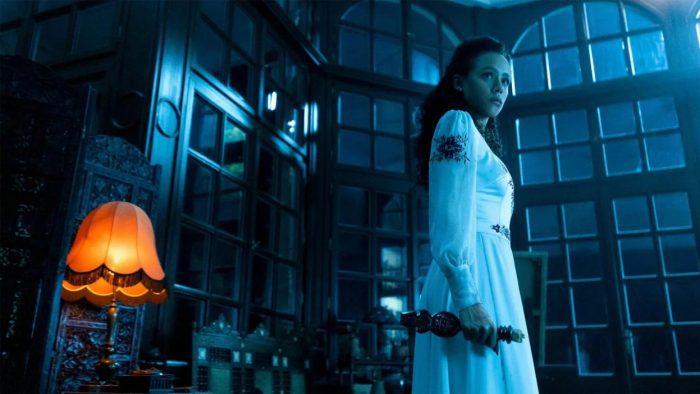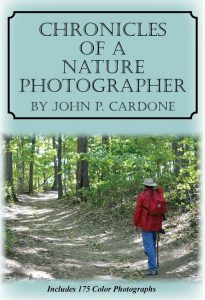Reviewed by Jeffrey Sanzel
After nearly forty-five years and thirteen installments, the Halloween franchise comes to a close. Halloween Ends is the third in David Gordon Green’s reboot that began with Halloween (2018) and Halloween Kills (2021). John Carpenter’s 1978 Halloween remains one of the finest horror films of the modern era, while the ensuing sequels and revisions produced diminishing returns.
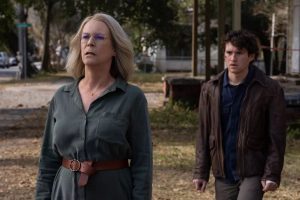
Halloween Ends opens in 2019, three years after Halloween Kills, culminating with Michael Myers slaughtering an entire mob. Twenty-one-year-old Corey Cunningham (Rohan Campbell) accidentally causes the death of his rambunctious babysitting charge, Jeremy Allen (Jaxon Goldenberg), witnessed by the boy’s parents (Candice Rose and Jack William Marshall) as they return from an office party. It is an effective moment, one that is truly horrifying.
The film jumps forward three years to the present. A seemingly healed Laurie Strode (Jamie Lee Curtis) works on her memoir while facing the town’s anger; residents of Haddonfield hold Laurie responsible for Michael Meyer’s rampage. Laurie’s orphaned granddaughter Allyson Nelson (Andi Matichak), shares her new house. Considering the occurrences of four years prior, she also seems rather well-adjusted.
In a chance meeting, Laurie encounters Corey, who has just been terrorized by a quartet of high school band students. Corey, like Laurie, is a pariah in the community. While acquitted, he remains an outcast, replacing the seemingly absent Michael Myers. Corey is the new boogeyman. To treat his injured hand, Laurie takes Corey to the medical office where Allyson works, setting up the pair—a choice she quickly regrets. Allyson is immediately attracted to the shy, awkward Corey, and they become involved.
After Jeremy’s mother chases Corey from a Halloween party, the bullies throw him off a bridge. He awakes in a sewer, confronted by Michael Myers (played by Nick Castle and James Jude Courtney). In a new twist, the killer sees Corey’s history in the boy’s eyes and lets him go. Immediately following, while defending himself, Corey accidentally kills a homeless man. With this encounter, the film takes a new path, tracking Corey as he assumes the mantle of Michael Myers.
The disastrous Halloween Kills was a pointless movie, a meandering bloodbath created as a tensionless placeholder between the first and final chapters. Halloween Ends attempts to cover bigger and deeper territory. The film meditates on trauma and healing in individuals and the community. Discussions of evil entwine, questioning whether it is inherent or a result of circumstances—the nature versus nurture argument. Unusually, Michael functions as symbol and slasher.
While Halloween Kills focused on mob mentality and the resulting violence, Halloween Ends offers a subtler perspective. Laurie refers to Haddonfield as “a plague of grief, of blame, of paranoia.” Pervading is the sense that the town must always have scapegoats—in this case, Corey, the “psychopath babysitter,” and Laurie, “the freak show.” Laurie parses the evil without—the threat to the tribe—and the malevolence within—likened to a core sickness. Evil does not die; it changes shape. Strangely—and out of place—thoughts of forgiveness are also introduced late in the action. These heady concepts stir a more interesting mix, but while raising many theories, most remain muddled and inconclusive.
Like the previous film, the dialogue is stiff, declarative, and occasionally cringeworthy. A character states: “If I can’t have her, no one will.” Among the most puzzling pieces: Why would a devastated town continue to celebrate Halloween? Also, drawing the connection between Michael and Corey becomes tenuous. Part of Michael’s gestalt is the random and passionless kills. Corey murders predominantly for revenge, harkening to films such as Carrie or even Willard, where a bullied victim seeks retribution. Corey even has the caricature battle-axe mother (Joanne Baron), both smothering and abusive. However, clever references to the first film pepper the movie, particularly in Laurie and Michael’s final encounter.
Curtis, who was sidelined in the second film, spending much of the action in a hospital bed, takes center. Making her seventh appearance in the franchise, she presents both a grand and intimate farewell performance. Curtis owns her scenes with a strength not seen since the original. Matichak matches her as the self-actualized Allyson. Campbell’s burgeoning monster hits most of the right notes, but the predictability stymies surprise.
Thinly drawn characters driving the action populate the rest of the film. Will Patton’s Deputy Frank Hawkins is a bit too “aw-shucks” in his enamorment of Laurie. Jesse C. Boyd, who plays Allyson’s cop ex-boyfriend, is introduced to be easily dispatched. Keraun Harris, as disc jockey Willy the Kid, wandered in from a different film of a different era.
Halloween Ends delivers the promised finish. The trilogy concludes with a communal action that leaves little doubt, with no cheat teased in the credits suggesting a return. But horror movies have a way of reinventing their mythologies as needed. Is Michael Myers truly gone? That remains to be seen. To cite the misquoted Mark Twain, “Reports of my death have been greatly exaggerated.”
Rated R, the film is now playing in local theaters and streaming on Peacock.

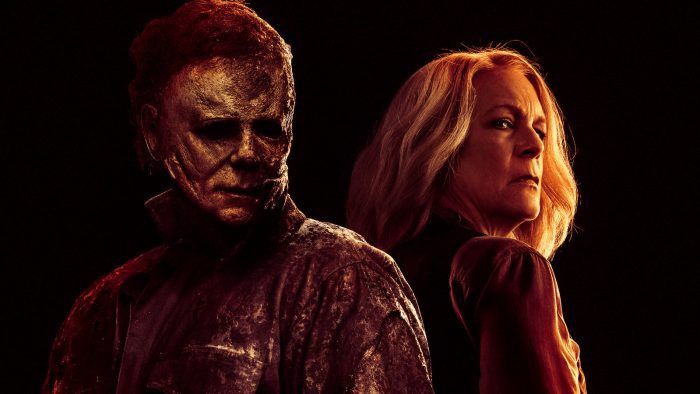
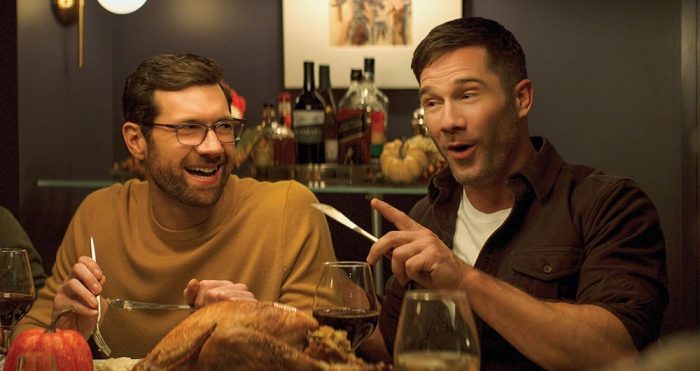

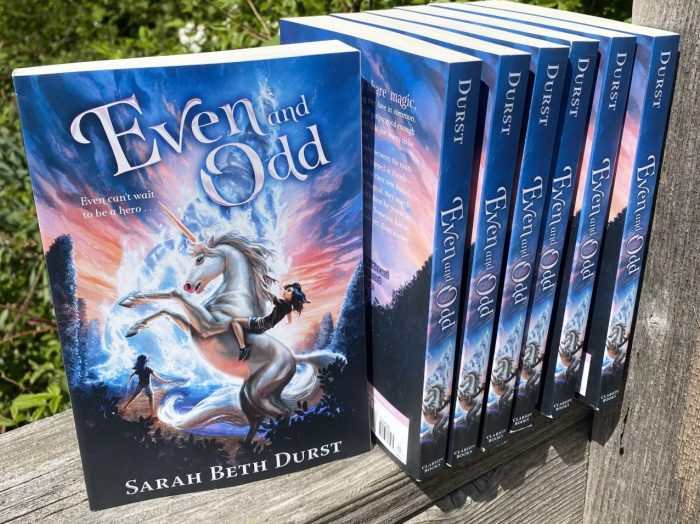

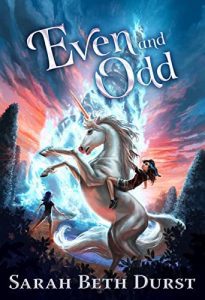 The Berry family runs a border shop, “close to the gateway between worlds,” serving the magical community when its members are in the mundane world. In addition to supplies, it is a source of information. For example, visitors “from Firoth could ask basic questions, such as ‘What is an airplane, and is it going to eat me?” The local gateway is behind Fratelli’s Express Bagel, owned by a wizard who looks like “a carb-and-cream-cheese-bearing Santa Claus.”
The Berry family runs a border shop, “close to the gateway between worlds,” serving the magical community when its members are in the mundane world. In addition to supplies, it is a source of information. For example, visitors “from Firoth could ask basic questions, such as ‘What is an airplane, and is it going to eat me?” The local gateway is behind Fratelli’s Express Bagel, owned by a wizard who looks like “a carb-and-cream-cheese-bearing Santa Claus.”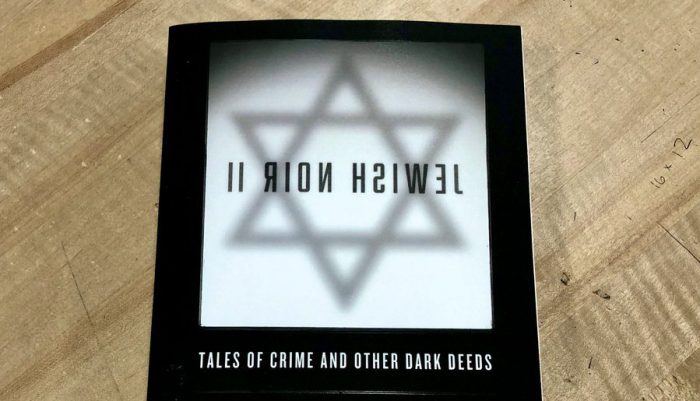
 As indicated by the title, the over-arching element is Judaism. But the editors offer a range of perspectives, from religious to cultural. Some stories feature Jewish identity at their core; in others, the elements remain peripheral. In an age steeped in fear and a global rise in antisemitism, many of these short pieces — subtly and directly — address the toxicity embroiled therein. Osman indicates in the introduction, “What I do know is that this anthology is important. And the stories in this book apply to everyone.”
As indicated by the title, the over-arching element is Judaism. But the editors offer a range of perspectives, from religious to cultural. Some stories feature Jewish identity at their core; in others, the elements remain peripheral. In an age steeped in fear and a global rise in antisemitism, many of these short pieces — subtly and directly — address the toxicity embroiled therein. Osman indicates in the introduction, “What I do know is that this anthology is important. And the stories in this book apply to everyone.”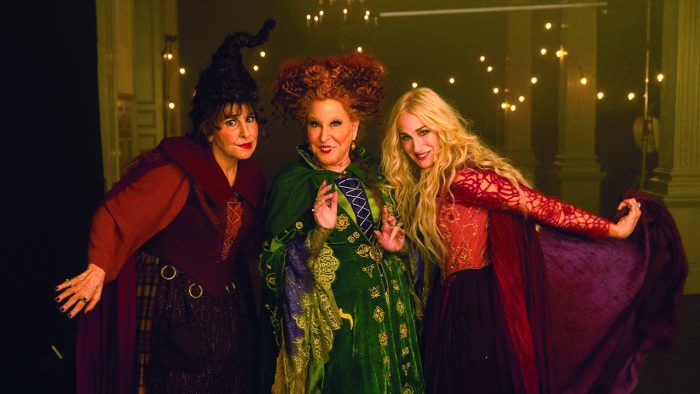
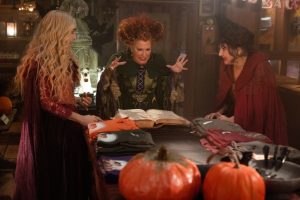
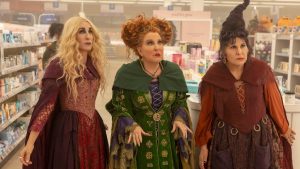

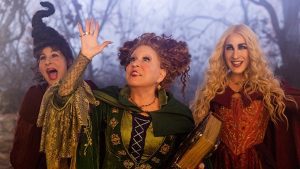
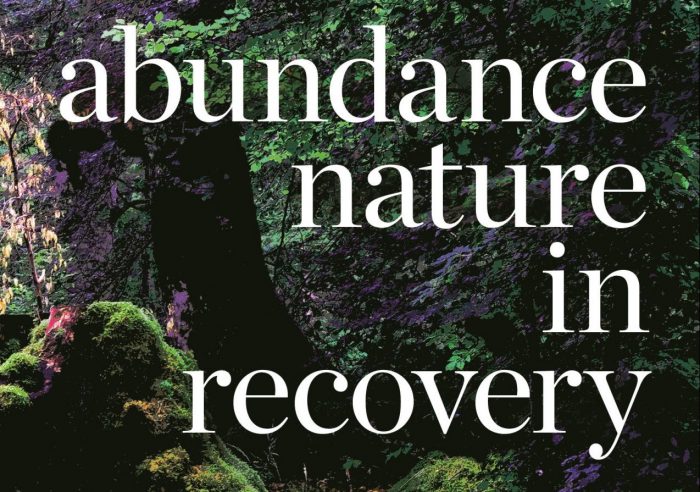
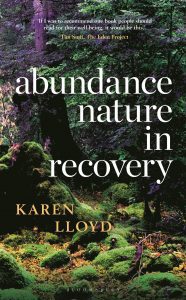 In fourteen intriguing essays, she addresses a host of issues. She concedes that often problems are “hyperobjects”— concepts, ideas, and things that are so vast as to evade intellectual and emotional grasp. These include the biosphere, climate breakdown, evolution, capitalism, and politics. What makes her writing exceptional is that while she acknowledges this limitation, it has not stopped her from exploring them with insight and depth, offering both simple and breathtaking awareness.
In fourteen intriguing essays, she addresses a host of issues. She concedes that often problems are “hyperobjects”— concepts, ideas, and things that are so vast as to evade intellectual and emotional grasp. These include the biosphere, climate breakdown, evolution, capitalism, and politics. What makes her writing exceptional is that while she acknowledges this limitation, it has not stopped her from exploring them with insight and depth, offering both simple and breathtaking awareness.